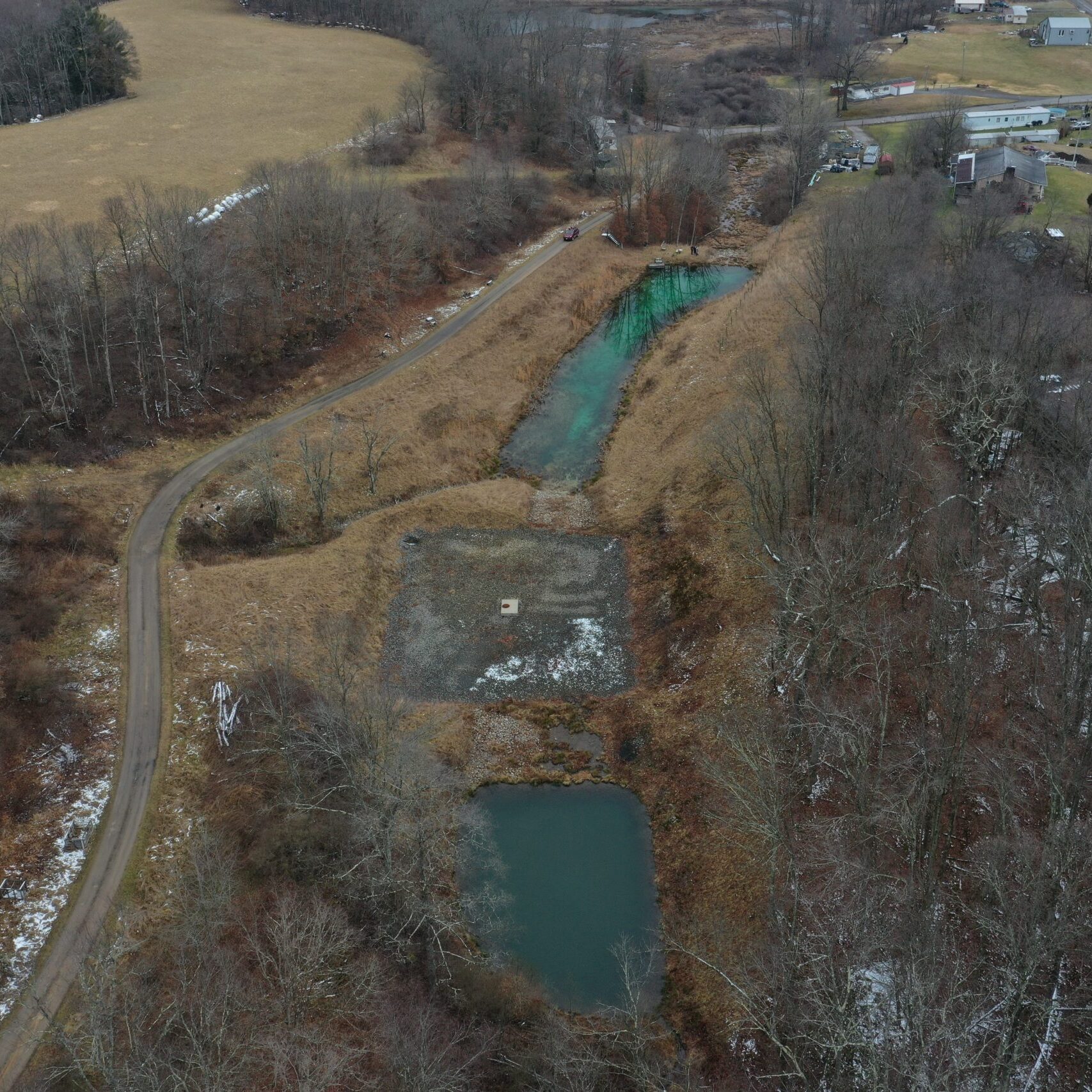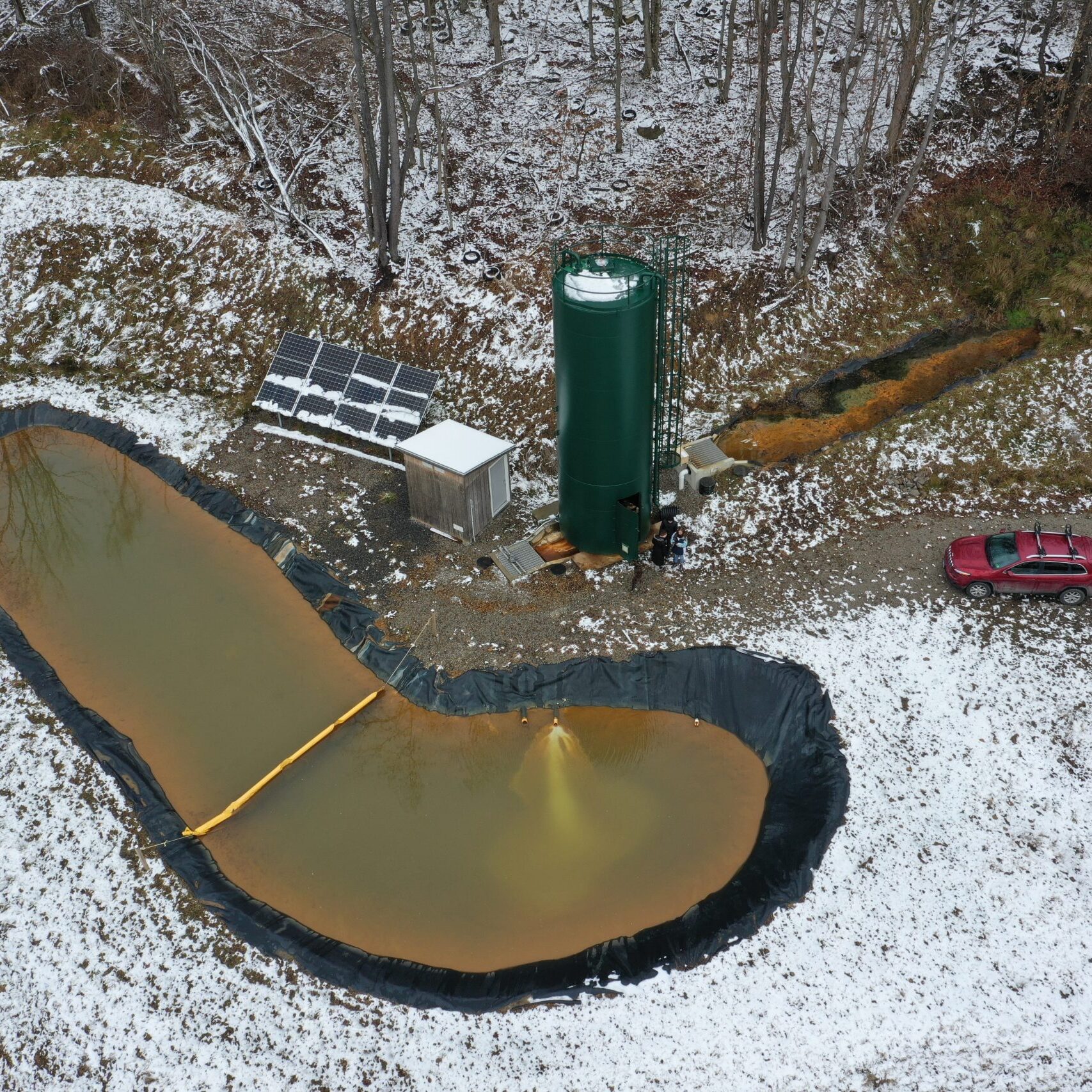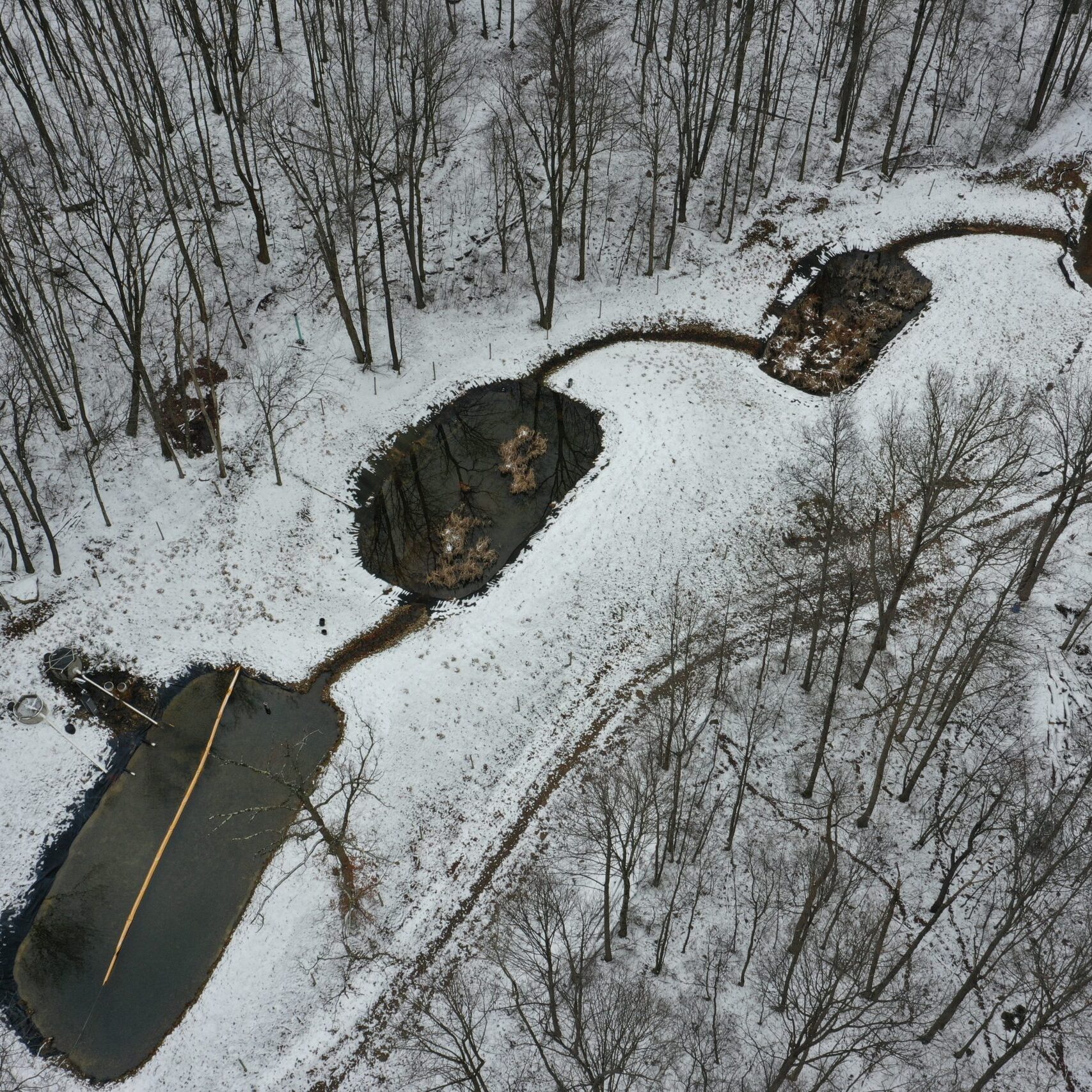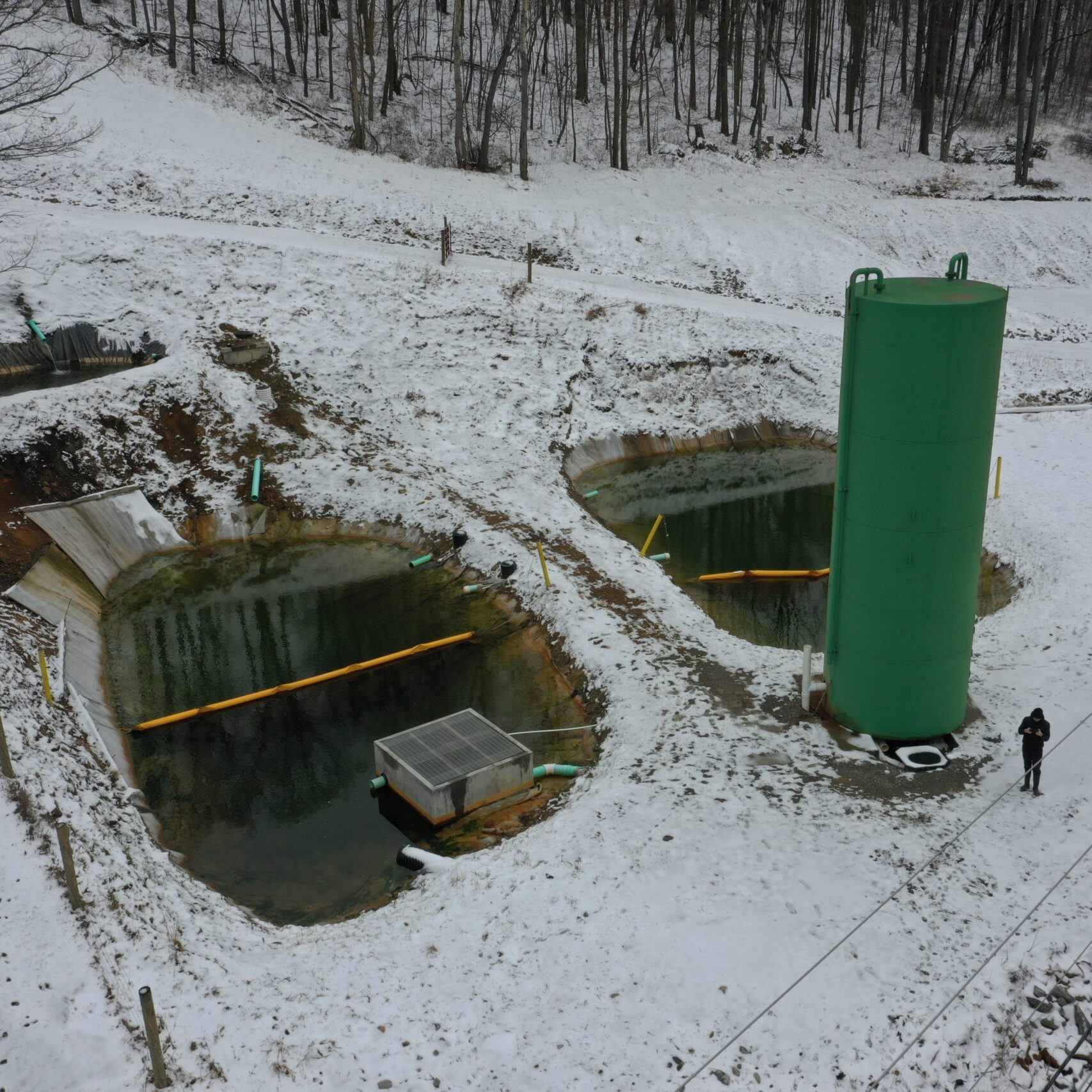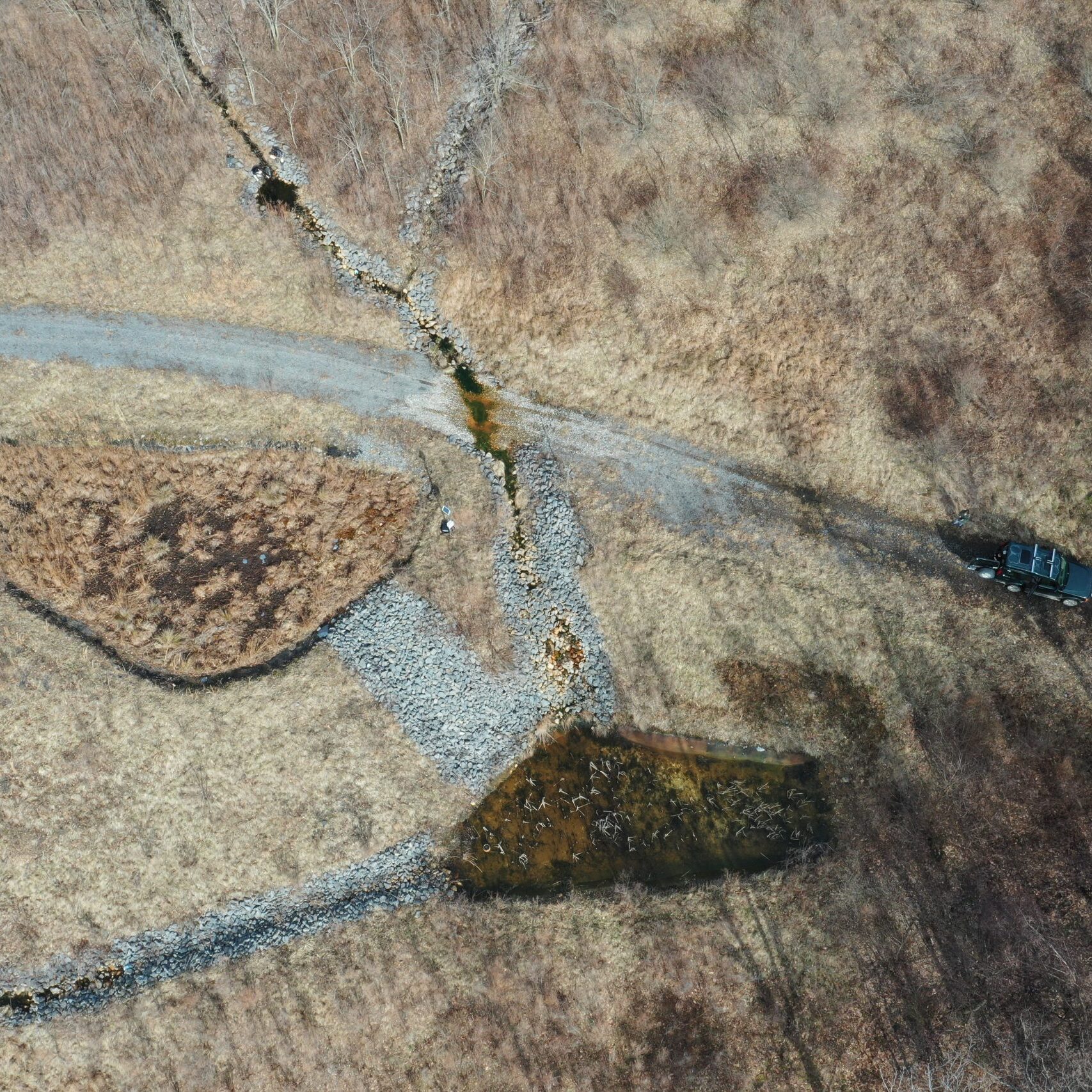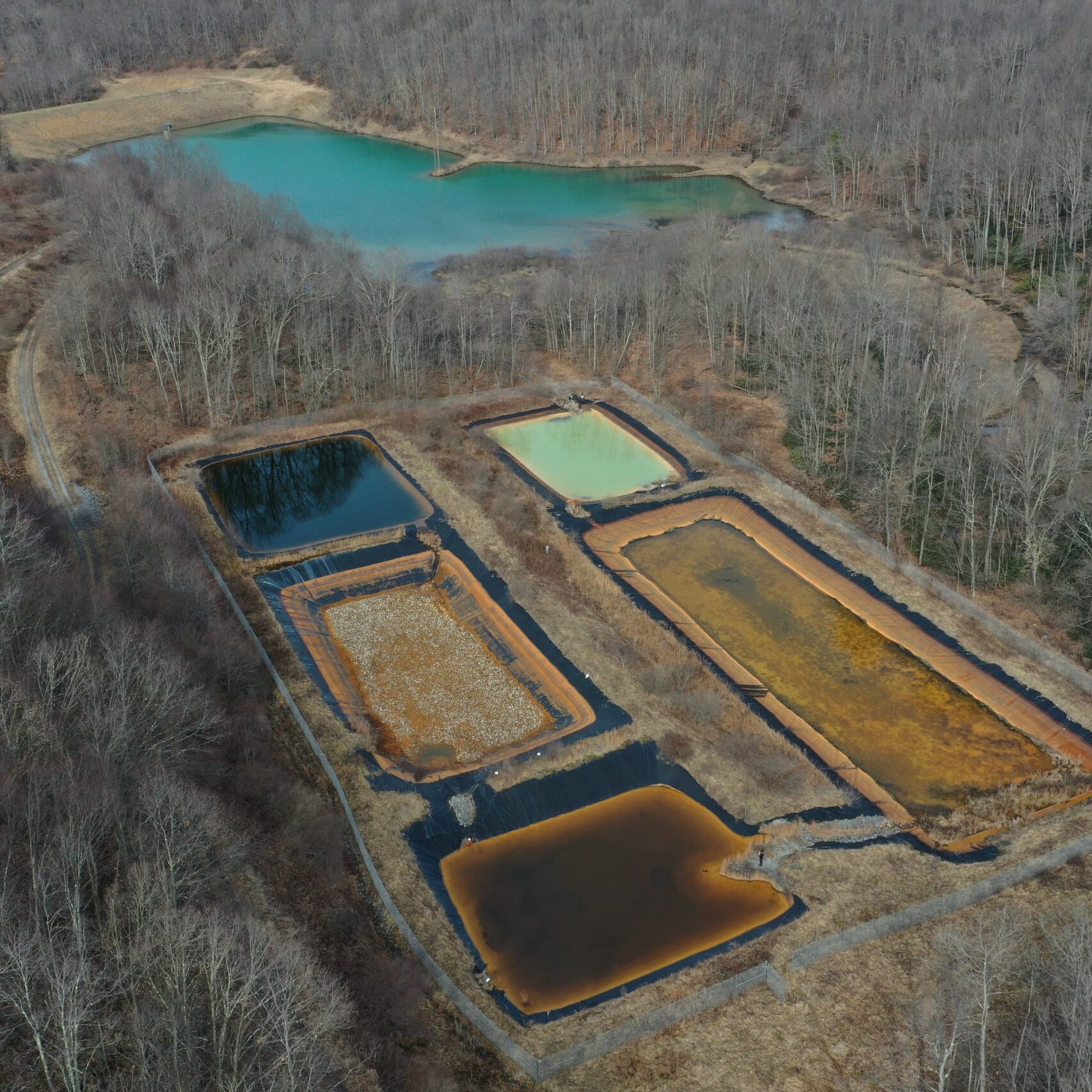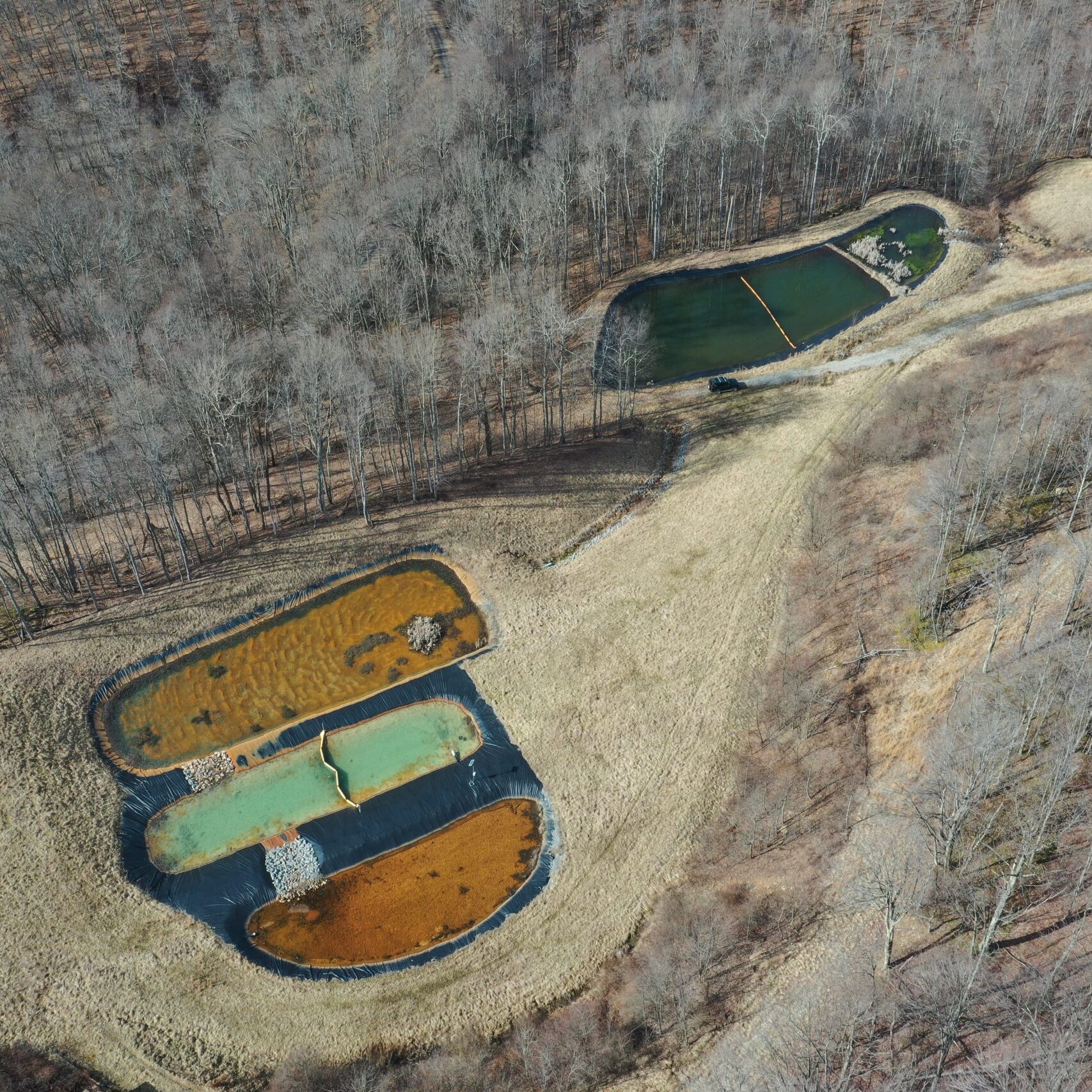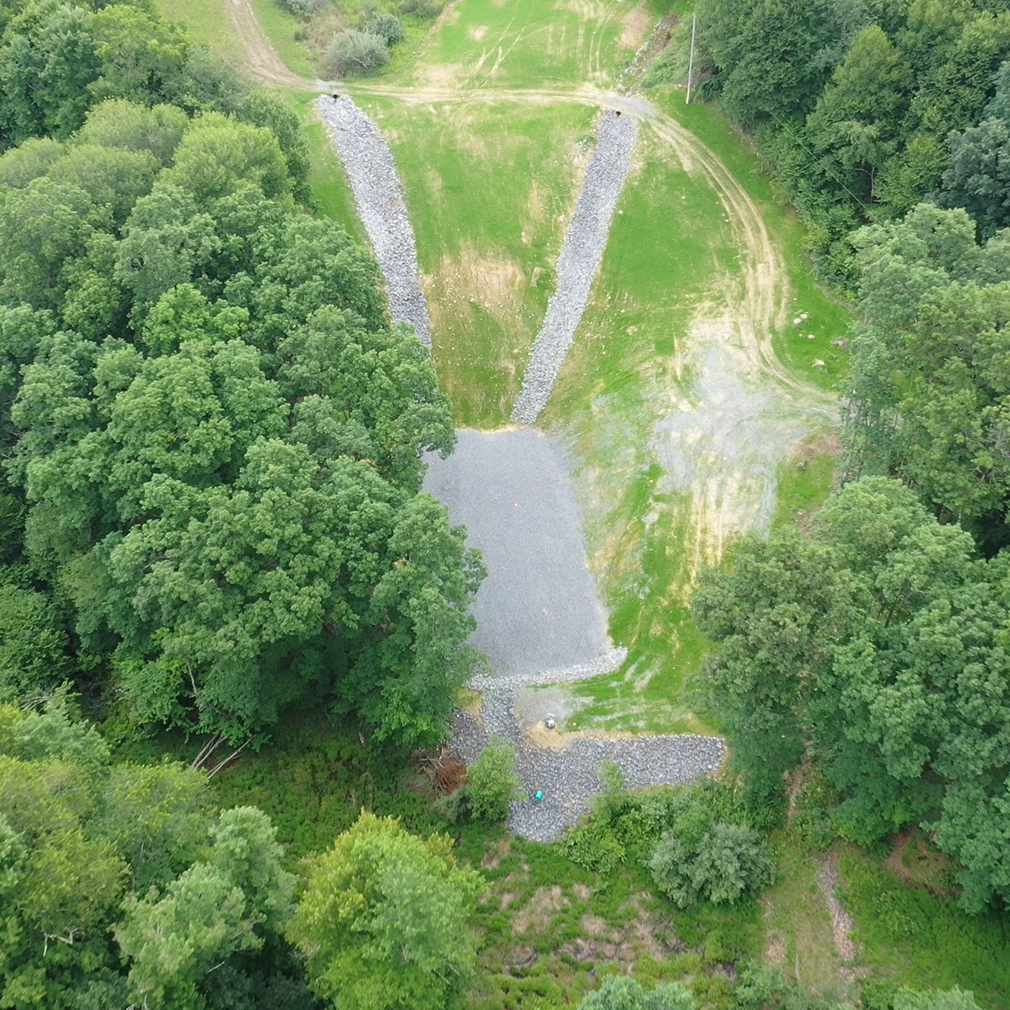Acid Mine Drainage Remediation Projects
FODC has built and maintains several project sites within the watershed that help improve water quality by reducing acid mine drainage (AMD) emanating from abandoned mines. AMD is the most common pollutant in the Deckers Creek watershed and is the primary focus of our remediation projects. While considerable improvements have been made to Deckers Creek over the years, the stream still does not meet several of the Environmental Protection Agency's water quality standards. To alleviate these issues, FODC has set out to clean and remediate many of the streams and tributaries that feed into Deckers Creek. FODC currently maintains six passive and two active treatment sites.
We are always accepting statements of qualification from engineering firms that specialize in AMD remediation and stream restoration designs. Please contact us at info@deckerscreek.org for further information.
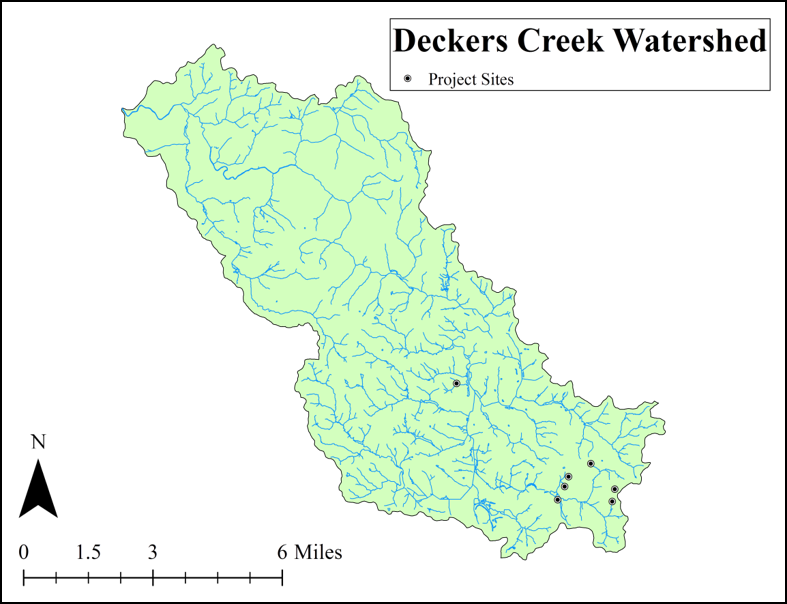
Slabcamp Tributary
PASSIVE TREATMENT SYSTEM
Completed in 2015, this project targets several abandoned mine discharges that feed into an unnamed tributary to Slabcamp Run, a 5.4 acre wetland, and ultimately Deckers Creek just outside of Masontown. This project utilizes auto-flushing limestone ponds that are equipped with automatic siphons that are powered by air and water.
Kanes Creek South Site #1
ACTIVE TREATMENT SYSTEM
In 2011, FODC completed the Kanes Creek South Site #1 project which actively distributes hydrated lime into a tributary to Kanes Creek and Deckers Creek. Upgrades to this project were completed in 2018 to more efficiently mix the hydrated lime and acidic mine water. This improves the reaction that pulls the metals out of solution and collects them before they can enter the stream. This was accomplished by adding a low pH iron oxidation terrace, pre-aeration tank, mixing tank, and settling pond. The pre-aeration tank and mixing tank are powered by solar panels and the remainder of the system is powered by water.
Valley Point #12
PASSIVE TREATMENT SYSTEM
FODC originally constructed the Valley Point #12 project in 2008 in the Valley Point area of Preston County. Then in 2016, renovations to Valley Point #12 were completed to address issues with mine seepage. Two upflow limestone wells were installed (see photo). The previous sulfate reducing bioreactors (SRBs) were replaced with anaerobic vertical flow wetlands. These renovations stayed within the footprint of the original project, but will make a large difference on the effectiveness and longevity of the system.
Valley Highwall #3
ACTIVE TREATMENT SYSTEM
The Valley Highwall #3 project was originally constructed in 2010 to treat mine water draining into Kanes Creek and Deckers Creek. Unfortunately, performance of this doser was negatively affected by unreacted lime and excessive metal hydroxide precipitates clogging the tributary as it flowed downstream. To solve this problem, upgrades to Valley Highwall #3 were completed in 2019. This includes the addition of several settling ponds and a trompe to more efficiently mix the hydrated lime and acidic mine water. This improves the reaction that pulls the metals out of solution and collects them before they can enter the stream.
Reed Mine
PASSIVE TREATMENT SYSTEM
This project, which was completed in 2013, targets the abandoned Reed Mine out in the Valley Point area of Preston County. The AMD emanating from this site feeds into Dills Run, a nearby flood control impoundment, Kanes Creek, and ultimately Deckers Creek.
SAPS & SPTP
PASSIVE TREATMENT SYSTEM
In 1997, the Office of Abandoned Mine Lands and Reclamation constructed the Upper Deckers Creek Impoundment #5 and the nearby successive alkalinity producing system (SAPS) in order to remediate AMD. FODC later expanded on the previously installed SAPS in 2012 and constructed the Satcher Pre-Treatment Pond (SPTP) while also reworking piping and overflow areas within the SAPS system to treat additional AMD.
The additional SPTP pond was constructed to collect water emanating from a nearby AMD source not being treated by the SAPS system. This pre-treatment pond is now connected to the larger SAPS system.
Ingrand Mine
PASSIVE TREATMENT SYSTEM
Completed in 2016, this project treats mine water from the abandoned Ingrand Mine before it enters Dills Run, a nearby flood control impoundment, which then enters Kanes Creek and later Deckers Creek. This project treats effluent from four Ingrand Mine discharges, one of which has a high prevalence of ferrous iron. The water is treated as it flows through the following components: a low pH iron oxidation terrace, limestone settling pond, vertical flow wetland (VFW), a second settling pond, and finally an aerobic wetland.
Dillan Creek
PASSIVE TREATMENT SYSTEM
Our Dillan Creek acid mine drainage treatment system operates by routing AMD from two seeps through open limestone channels and into a self-flushing limestone leach bed. Since limestone is a base with a high pH, the channels and leach bed neutralize the low pH of the acidic solution. After this, an automatic drainage system flushes the neutralized water out of the leach bed and into a constructed wetland. This constructed wetland removes metals from the water through plant uptake and soil adsorption before the now clean water enters Dillan Creek.

